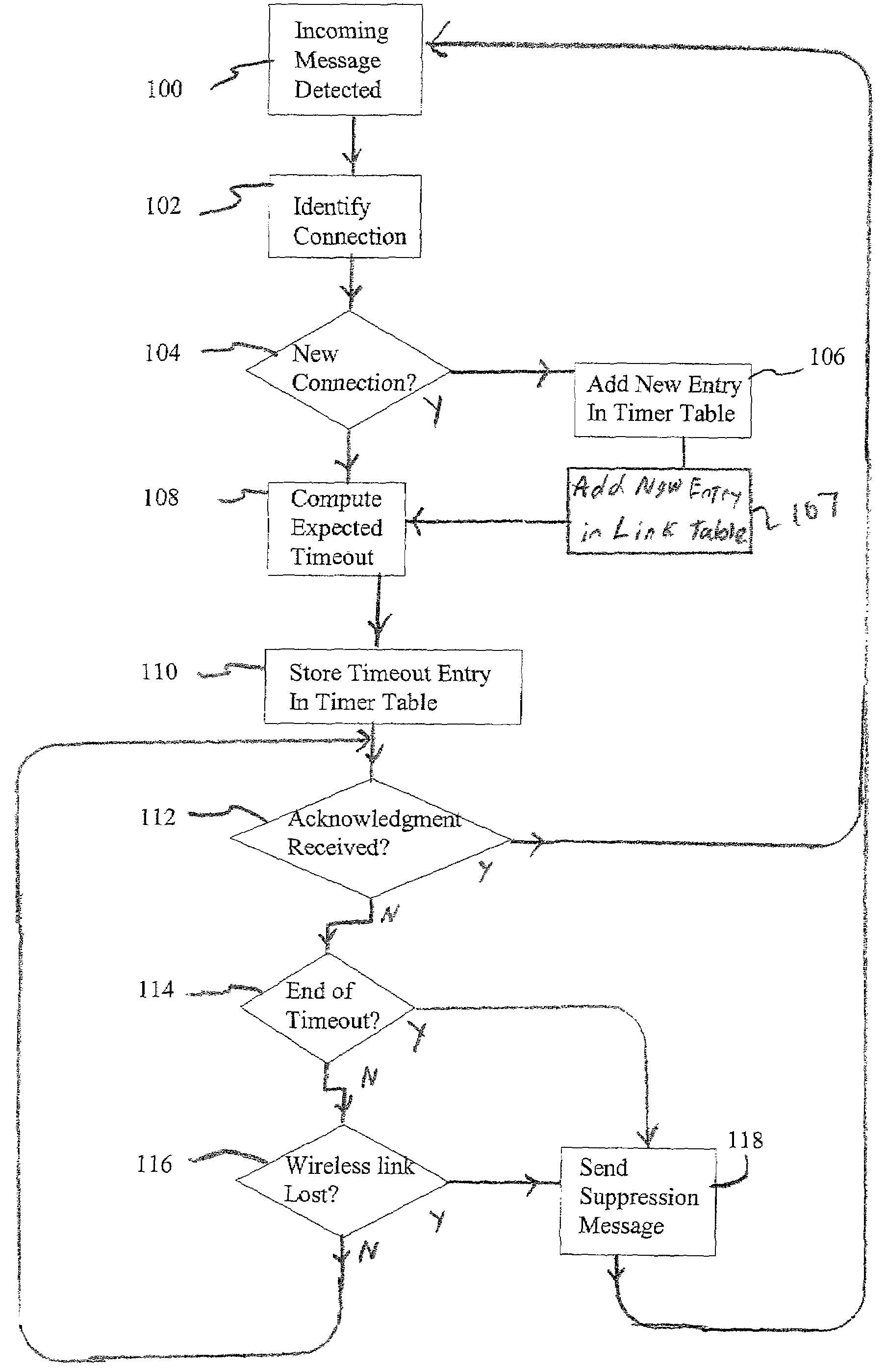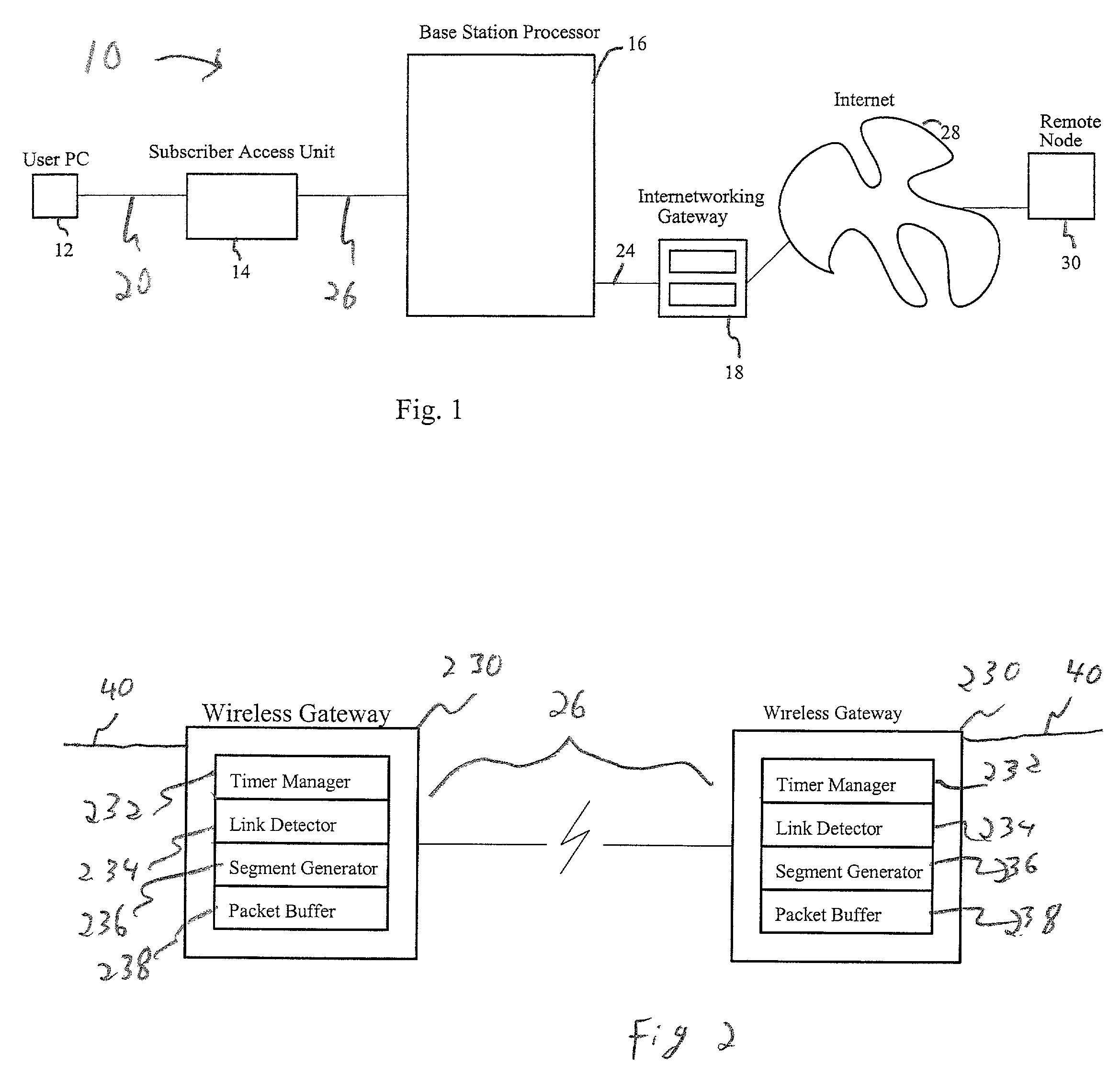Link-aware transmission control protocol
a transmission control and transmission control technology, applied in the field of link-aware transmission control protocol, can solve the problems of unnecessarily premature time out of the time out mechanism which only accommodates the return layer delay, and the inherent delay of assignment and reassignment, so as to prevent the activation of congestion control mechanisms, reduce throughput, and avoid congestion control mechanisms. effect of message throughpu
- Summary
- Abstract
- Description
- Claims
- Application Information
AI Technical Summary
Benefits of technology
Problems solved by technology
Method used
Image
Examples
Embodiment Construction
[0021]A description of a preferred embodiment of the invention follows. FIG. 1 is a block diagram of a communication system 10 operable for link-aware transmissions in a wireless network as defined herein. The communication system includes local computing devices, generally a user PC 12, a subscriber access unit (SAU) 14, a base station processor (BSP) 16, and an internetworking gateway 18. The user PC 12 is in communication with the subscriber access unit 14 via a wired link 20. The subscriber access unit 14 is in communication with the base station processor 16 via a wireless link 26. The base station processor is in communication with an internetworking gateway 18 via a wired link 24. The internetworking gateway 18 is adapted for communication via a public access network such as the Internet 28 for maintaining a connection with a remote node 30. Note that a single user PC 12 subscriber access unit (SAU) 14 and base station processor (BSP) 16 are shown for illustrative purposes. M...
PUM
 Login to View More
Login to View More Abstract
Description
Claims
Application Information
 Login to View More
Login to View More - R&D
- Intellectual Property
- Life Sciences
- Materials
- Tech Scout
- Unparalleled Data Quality
- Higher Quality Content
- 60% Fewer Hallucinations
Browse by: Latest US Patents, China's latest patents, Technical Efficacy Thesaurus, Application Domain, Technology Topic, Popular Technical Reports.
© 2025 PatSnap. All rights reserved.Legal|Privacy policy|Modern Slavery Act Transparency Statement|Sitemap|About US| Contact US: help@patsnap.com



